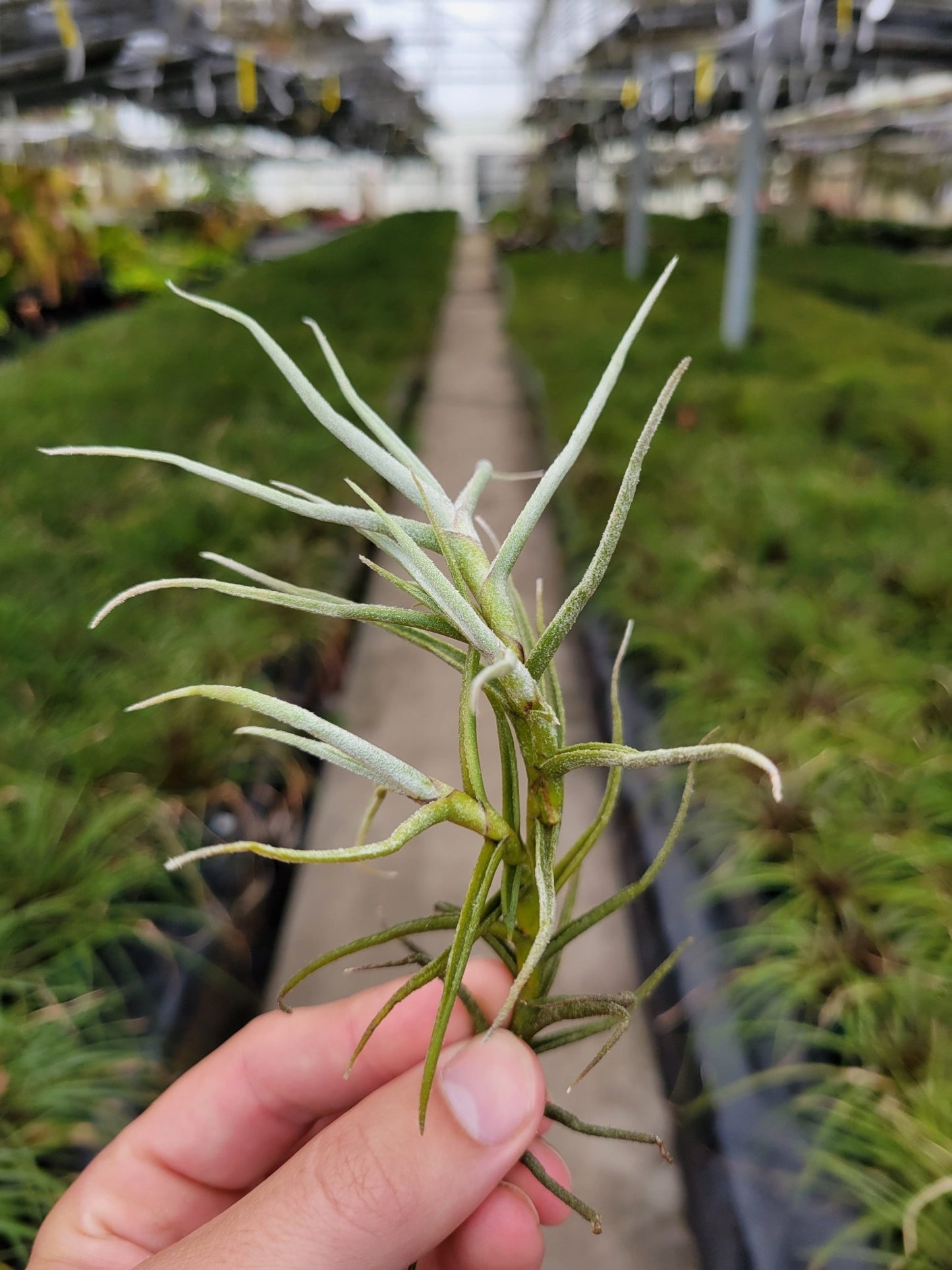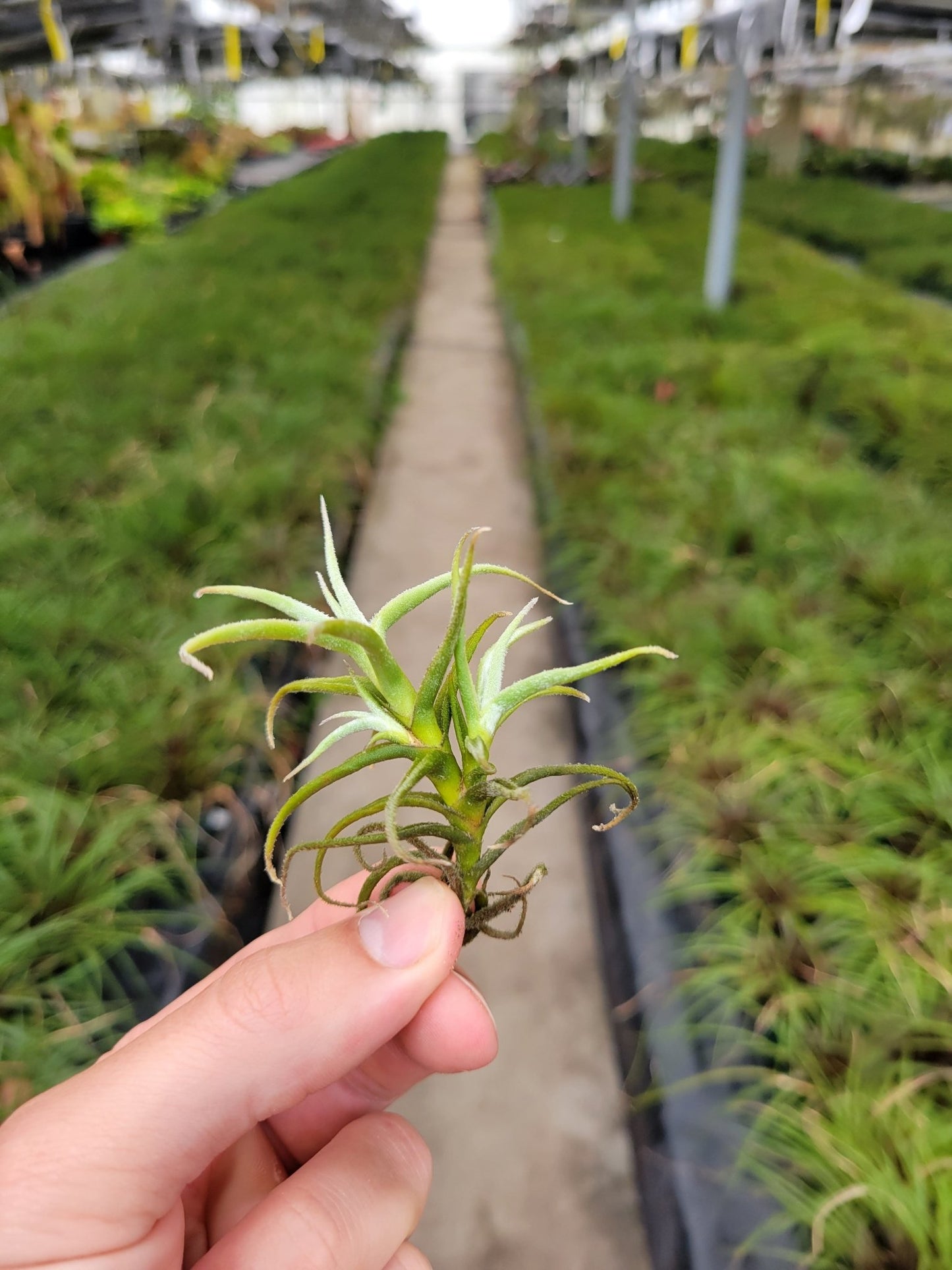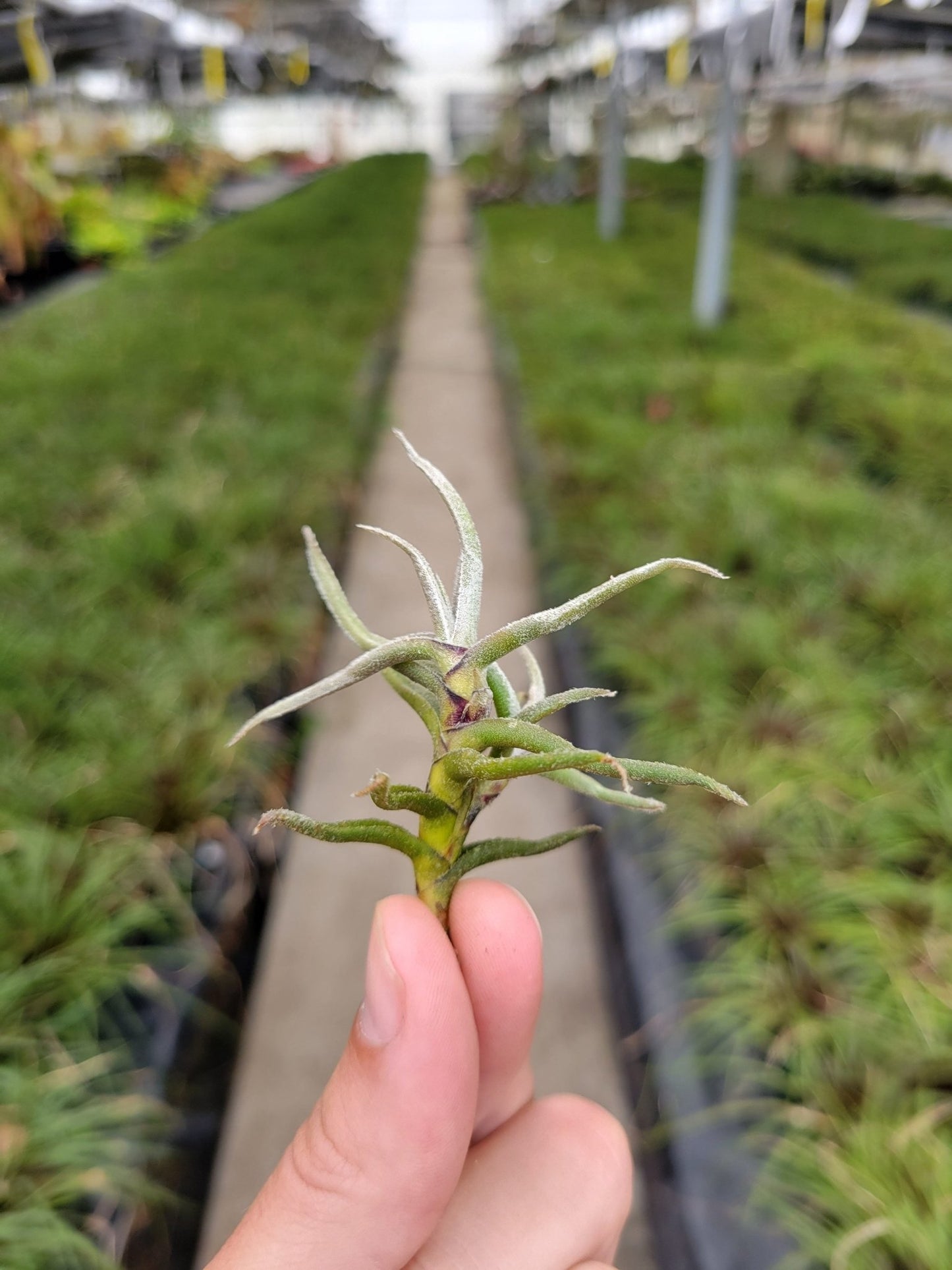Bromeliaceae
Tillandsia paleacea
Tillandsia paleacea
Couldn't load pickup availability
Share
Native to a vast range from southwestern Colombia to northern Chile, this versatile airplant thrives from sea level to over 3,000 meters in elevation.
Key Features:
- Highly adaptable, growing on cliffs, rock outcroppings, and even sand
- Distinctive coarse, chafflike trichomes covering the leaves
- Beautiful aster violet blooms
- Remarkable size variation, from tiny 4 cm specimens to impressive 20 cm giants
Tillandsia paleacea is a master of adaptation, perfectly suited to its challenging coastal desert habitat. This caulescent species forms small mounds about a meter across, with live growing tips always oriented toward the fog rolling in from the ocean. The narrow, involute-subulate blades are densely covered with coarse, cinereous trichomes, giving the plant its characteristic chafflike appearance and inspiring its name.
In cultivation, you'll find an astonishing range of sizes. The petite 'Enano' variety, found along the Peruvian coast, grows to just 4 cm wide and 6 cm tall. At the other extreme, the 'Gigante' form can reach an impressive 20 cm wide and 35 cm tall. This size variation showcases the species' remarkable adaptability to different environmental conditions.
When in bloom, T. paleacea produces a slender scape that can be short or long, mostly glabrous. The inflorescence may be simple or compound, featuring lanceolate and complanate spikes. The distichous, imbricate floral bracts range from subglabrous to glabrous. All forms of this species boast lovely aster violet blooms that add a splash of color to its otherwise muted palette.
Collector's Note: This species is highly oligotrophic, meaning it has evolved to thrive in nutrient-poor environments. Its ability to form large stands covering many acres in its natural habitat is a testament to its resilience and efficiency.
Care Tips: Provide bright light and good air circulation. While it can absorb moisture from the air in humid conditions, occasional misting or brief soaking is beneficial in drier environments. Due to its thin leaves and dense trichome coverage, it prefers a brightly lit location.
Ideal for:
- Collectors seeking a low-maintenance, drought-tolerant Tillandsia
- Those interested in plants with remarkable environmental adaptations
- Enthusiasts looking for species with size variety within the same taxon
- Growers in coastal or arid regions
Display Recommendation: Mount on bark or rock to mimic its natural cliff-dwelling habitat. Its ability to form clumps makes it an excellent choice for creating living sculptures or airplant "trees."
Bring home this resilient beauty and witness the remarkable adaptability of coastal desert airplants in your own space.






